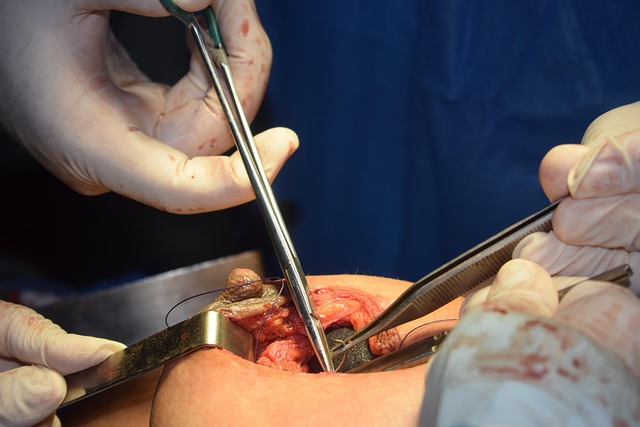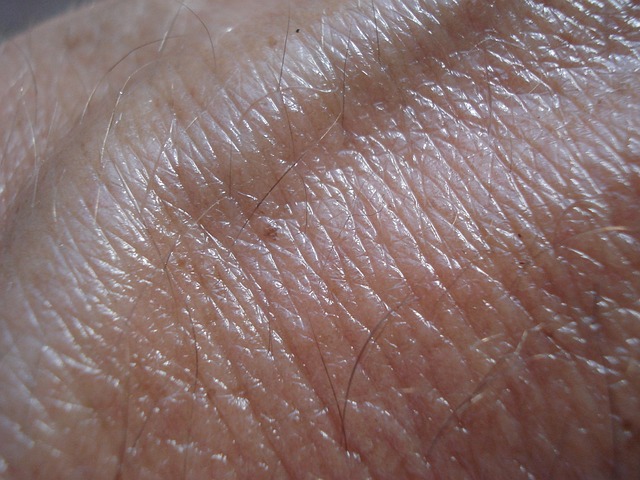Skin tags, caused by various factors, can be removed painlessly via methods like cryotherapy, laser treatment, or surgical excision under local anesthesia. Topical creams and medications offer gentle alternatives, while over-the-counter creams exfoliate and prescription options address sensitivity. Aftercare is vital post-removal to prevent regrowth, including cleanliness, protection from sun, and regular check-ups with a dermatologist for optimal results, especially with painful or persistent skin tags.
Tired of unsightly skin tags? Discover top dermatologist-recommended treatments for stubborn skin tags, from painless non-surgical options to effective topical solutions and surgical excisions. Understanding different types and causes can empower you to choose the best method for permanent removal. Learn about proven strategies to prevent regrowth post-removal, ensuring smooth, tag-free skin. Explore these options and bid farewell to those pesky skin tags once and for all with our guide on painless skin tag removal procedures.
- Understanding Skin Tags: Causes and Types
- Non-Surgical Options for Painless Removal
- Topical Creams and Medications for Tag Elimination
- Surgical Excisions: When Needed
- Preventing Regrowth Post-Removal
Understanding Skin Tags: Causes and Types

Skin tags are a common skin condition that affects many people, often appearing as small, soft, flesh-coloured growths or bumps on various parts of the body. They are typically harmless but can be unsightly and sometimes irritating, leading individuals to seek effective removal methods. Understanding their causes is essential when exploring treatment options.
These tags develop due to a variety of reasons, including friction against skin, weight gain, hormonal changes, and genetic predisposition. They can occur on any area of the body, but commonly show up in places like the neck, armpits, groin, and ankles. There are different types, such as acral verrucae (small, rough bumps often found on the hands or feet) and skin tags (soft, hangy growths). When considering a painless skin tag removal procedure, it’s crucial to consult professionals who can offer effective yet gentle solutions, especially compared to painful alternatives like cutting off skin tags. For those in London seeking private skin tag removal or exploring options in Gillingham, there are specialized clinics providing modern and safe treatments.
Non-Surgical Options for Painless Removal

When it comes to eliminating stubborn skin tags without surgery, several non-invasive options offer effective and painless removal. One popular choice is cryotherapy, where a dermatologist uses liquid nitrogen to freeze and destroy the skin tag. This quick procedure is often preferred for its minimal discomfort and ability to avoid scarring. Another method gaining popularity is laser treatment, which utilizes targeted light energy to eliminate skin tags with precision. Both techniques are safe and suitable for most individuals, ensuring that you can bid farewell to those unsightly skin tags without any significant downtime or pain.
For those seeking a private skin tag removal solution in Doncaster or looking to explore the best practices for choosing a painless method, consulting a qualified dermatologist is key. They can guide you through various options, considering factors like skin type, the size and number of skin tags, and your personal preferences. With their expertise, you can select the ideal painless skin tag removal procedure tailored to your needs.
Topical Creams and Medications for Tag Elimination

When it comes to eliminating stubborn skin tags, topical creams and medications offer a range of effective solutions. These non-invasive approaches are designed to soften and dislodge the tag gently, making them ideal for those seeking a painless skin tag removal procedure. Common active ingredients in over-the-counter creams include salicylic acid and lactic acid, which help to exfoliate the dead skin cells surrounding the tag.
For more persistent tags or on sensitive areas, prescription medications can be used. These might include topical retinoids or certain steroid creams that reduce inflammation and promote shedding of the skin tag. It’s important to note that while these treatments are generally safe, individuals should follow the best practices for removing skin tags on sensitive areas, such as consulting with a dermatologist before starting any new regimen, especially if they have a history of skin conditions or allergies. Additionally, considering factors like product strength and application techniques can ensure optimal results without causing further irritation.
Surgical Excisions: When Needed

Surgical excisions are often recommended for stubborn or numerous skin tags that haven’t responded to other treatments. This procedure, typically performed under local anesthesia, involves cutting out the skin tag and sealing the wound to prevent scarring. It’s considered a quick and relatively painless skin tag removal method, especially when carried out by a skilled professional. Many people opt for this approach due to its effectiveness in eliminating skin tags once and for all.
For those seeking private skin tag removal Doncaster or considering a London skin tag clinic, it’s essential to understand that surgical excisions are suitable for various skin types and locations. While there might be minor discomfort during the procedure, most patients experience minimal downtime afterward, making it a convenient option for busy individuals who want swift results without sacrificing comfort.
Preventing Regrowth Post-Removal

After any skin tag removal procedure, whether at a private skin tag removal Guildford clinic or a similar service in Plymouth, it’s essential to maintain proper aftercare to prevent regrowth. Many painless skin tag removal procedures, including those using heat therapy, effectively eliminate tags but require careful follow-up. First, keep the treated area clean and dry; gentle washing with mild soap and water is recommended to avoid irritation. Second, applying a soothing cream or ointment can help reduce discomfort and promote healing. It’s crucial not to pick at or disturb the area, as this could lead to infection or cause the skin tag to re-emerge.
Additionally, protecting the skin from sun exposure is vital; always use sunscreen when outdoors to shield the treated area from UV rays, which can stimulate regrowth. If heat therapy was used, be aware that it might leave a temporary mark, but these usually fade over time. Regular check-ups with your dermatologist are also beneficial to ensure complete removal and address any concerns promptly, enhancing the likelihood of successful long-term results without the need for repeated procedures.
When it comes to stubborn skin tags, understanding your options is key. From non-surgical procedures like cryotherapy and laceration to topical treatments and surgical excisions, each method offers a unique approach to safe and effective removal. By choosing the right technique, you can bid farewell to these minor skin growths for good. Remember, proper aftercare and prevention strategies are vital to preventing regrowth, ensuring a smooth and successful skin tag removal experience. For those seeking a painless procedure, exploring non-invasive options first can be a wise step towards achieving smoother, tag-free skin.
